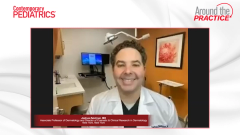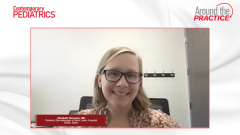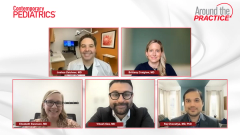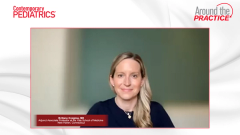
Case 2 Continued: Barriers to Treatment Adherence
Brittany Craiglow, MD, and Joshua Zeichner, MD, discuss treatment adherence in pediatric patients with atopic dermatitis.
Episodes in this series

Joshua Zeichner, MD: Let’s talk a little about treatment adherence and dealing with potential adverse effects, such as burning when you apply topical medications. Brittany, how do you deal with that issue?
Brittany Craiglow, MD: Adherence is huge. I remember being in training and thinking: “Why can’t anyone do what we’re asking them to do?” Then I became a mom of 2 kids with mild atopic dermatitis, and I thought: “Wow, this is hard.” We always want to meet the patient or the family where they’re at. If we’re giving them ointment and they don’t like grease, they aren’t going to use it. Trying to figure out what’s reasonable for them is the No. 1 thing. Also, if a patient comes in with a history of using something, how did they use it? Did they use it once here and there? Did they have a 15-gram tube? Did they use it appropriately? Getting that history is important.
We see stinging and burning, especially with our steroid-sparing agents like crisaborole and topical calcineurin inhibitors. It tends to be worse when these products are applied directly to inflamed skin, so I tend to use them more as a maintenance therapy or tell families to think of them as almost a medicated moisturizer for hot spots. There are data that the stinging and burning improve with subsequent application. But you never want the treatment to be worse than the disease, so if something is stinging and burning and that’s continuing, we have to move on.
For adherence, I ask: “What’s reasonable for you? Are you able to do this? Do you hate the way grease feels, or do you prefer grease or an oil,” like [Elizabeth Swanson, MD,] said? Giving patients options can help with adherence. It’s also important for us to acknowledge. Sometimes when I see the family and I want them to do something twice daily for 2 to 3 weeks straight, I’ll say: “This is hard. I know this is hard. But trust me, if we can put this fire out, we may save you some work in the long run.” We may not, but it’s helpful to acknowledge that it’s a lot of hard work and the commitment required on the part of the family or the patient. It’s a lot.
Joshua Zeichner, MD: It’s so important to acknowledge that what we ideally want people to do isn’t what people are going to do in the real world, just because of practical aspects of life.
Transcript edited for clarity
Newsletter
Access practical, evidence-based guidance to support better care for our youngest patients. Join our email list for the latest clinical updates.











